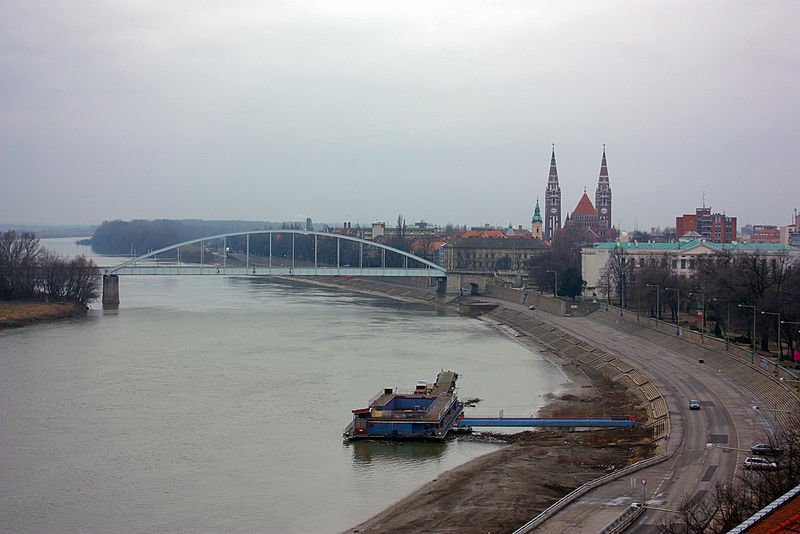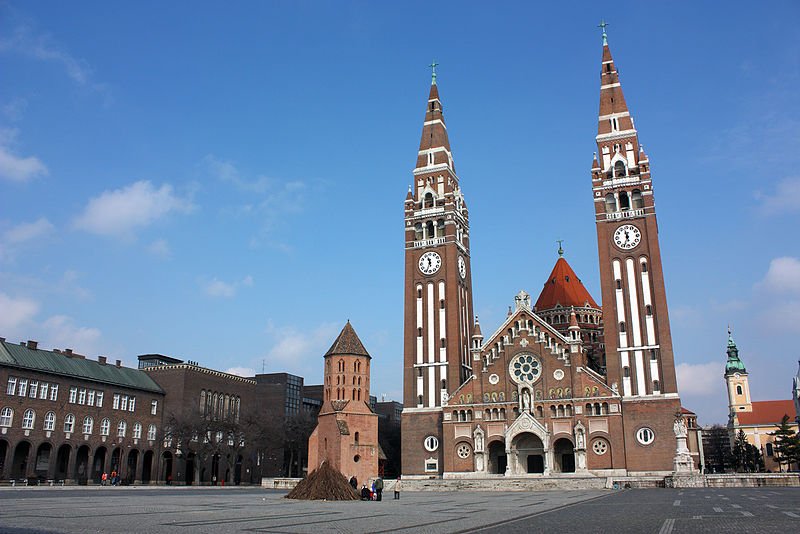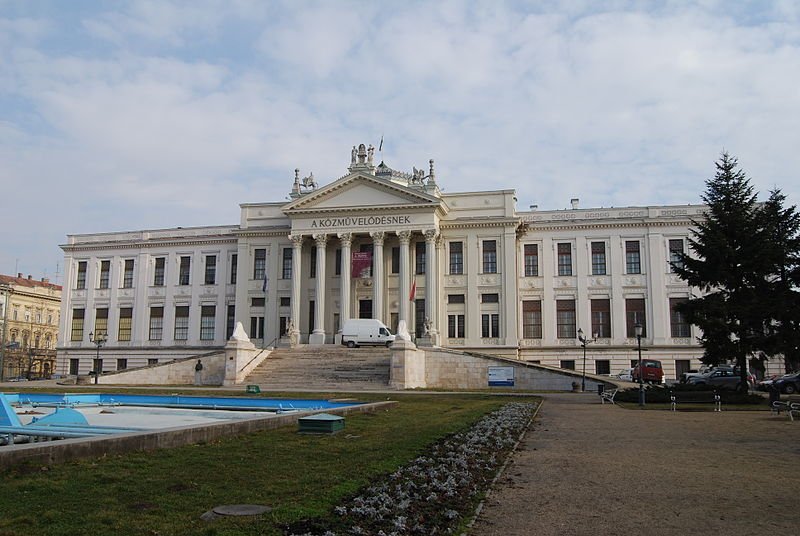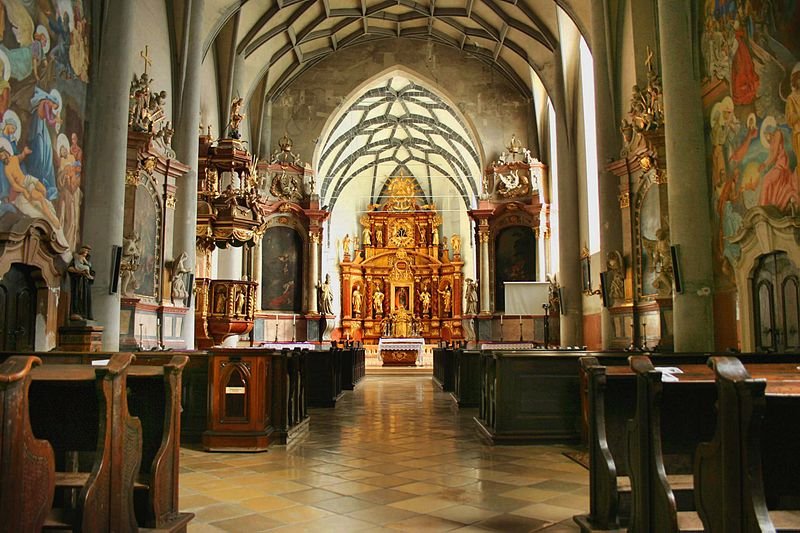 Szeged, Hungary
Szeged, HungarySource: https://commons.wikimedia.org/wiki/File:1_Szeged_View.jpg
Author: János Tamás

Szeged is a city in the southern part of Hungary. Covering 280.84 sq km (108.4 sq mi), it has a population of 170,000 people (2011 estimate), making it the third largest city in the country.
Szeged is the county seat of Csongrád county, and the regional center for the Southern Great Plain area. The city is near to the southern border of the country. It straddles the River Tisza, just 20 km (12 mi) from the border with Serbia and Romania.
 Szeged Cathedral, with the Demetrius Tower in front
Szeged Cathedral, with the Demetrius Tower in frontSource: https://commons.wikimedia.org/wiki/File:1_Szeged_Cathedral.jpg
Author: János Tamás

Szeged experiences a transitional climate between oceanic and continental. The warmest month is July, with average high temperature of 27.4°C (81.3°F). Coldest month is January, when the average low temperature drops to -4.8°C (23.4°F). June is the wettest month, receiving 72 mm (2.83 in) of precipitation.
The area around Szeged has been inhabited since ancient times. Its earliest known name was Partiscum, as was recorded by the ancient geographer Ptolemy (AD 90-168). The city is believed to have lived through invasions by Attila the Hun, the Mongols, and the Turks.
 Ferenc Móra Museum, Szeged
Ferenc Móra Museum, SzegedSource: https://commons.wikimedia.org/wiki/File:Ferenc_M%C3%B3ra_Museum_in_Szeged.JPG
Author: Chmee2/Valtameri

In the 18th century Piarist monks arrived in Szeged and proceeded to open a new grammar school there. The city also saw the largest witch trial in Hungary, which took place in 1728-29.
On the culinary front, Szeged is famous for introducing paprika to the table. It had arrived in Hungary in the second half of the 16th century, and grew in popularity from here. The city is also popular for its local dishes, among them Szekelygulyas, a pork goulash with sauerkraut and sour cream; and Halászlé, a fish soup made with carp and catfish.
 Mathias Church interior, Szeged
Mathias Church interior, SzegedSource: https://commons.wikimedia.org/wiki/File:Szeged_Mathias_Church_interieur.jpg
Author: Takkk

A massive flood in 1879 completely destroyed Szeged, requiring it to be rebuilt. In the process the city was remodelled with wide boulevards and numerous public squares, which are now enjoyed today.
Visiting Szeged
There are trains from Budapest to Szeged. The journey takes two hours on the fastest trains.Places of Interest in Szeged
- Castle Museum (Vármúzeum-Kőtár)
Museum housed in the castle built by Béla IV in 1247. Severely damaged during the 1879 flood, it today houses a small museum recounting the castle's history. - Demetrius Tower
Dating to the 12th century, this is the oldest structure in Szeged. It was once part of a church that is no longer standing. The tower was only rediscovered in 1925, when work to clear away a damaged Baroque cathedral for the construction of the Votive Church revealed it. This led to its restoration. - Dóm tér
The Cathedral Square, named after the Baroque cathedral that has since been cleared to make way for the Votive Church. A number of important buildings line the square, among them the Ecclesiastical Museum, Bishop's Palace, Monument to the Martyrs of Arad, and Gate of Heroes. - Ferenc Móra Museum
Museum housed in the purpose-built "Palace of Popular Culture" (Közművelődési Palota) completed in 1899. Its exhibits touch on archaeology, ethnography and the history of the Csongrád region. - Jewish Quarter (Zsidó Negyed)
The main building of the quarter is the New Synagogue, built in the Secessionist style in 1900-3 with a 48-m (157-ft) dome. Not far away, the Old Synagogue is still standing, with a high-water mark on its outer wall commemorating the flood level of 1879. - National Theater (Nemzeti Szinház)
Destroyed in a fire just two after it opened in 1883, the National Theater standing today is the result of restoration carried out thereafter. - Reök Palace (Reök palota)
This piece of Secessionist architecture erected by a wealthy local merchant in 1907 has often been described as a giant cake topped with striped marzipan. - Serb Orthodox Church (Görögkeleti Szerb Templom)
Church established by Serb immigrants in the early 18th century, remodelled in the Neo-Classical style in 1830. - Széchenyi Square
Large public square named after Hungary's greatest champion, Count István Széchenyi. - Szeged Cathedral (Szegedi Dóm)
A grand church built in 1913-30 in the Neo-Romanesque style. It has two towers that reach to just short of 100 m (328 ft). - Szeged Town Hall
Neo-Baroque building erected in 1883.
 Latest updates on Penang Travel Tips
Latest updates on Penang Travel Tips

Copyright © 2003-2025 Timothy Tye. All Rights Reserved.

 Go Back
Go Back